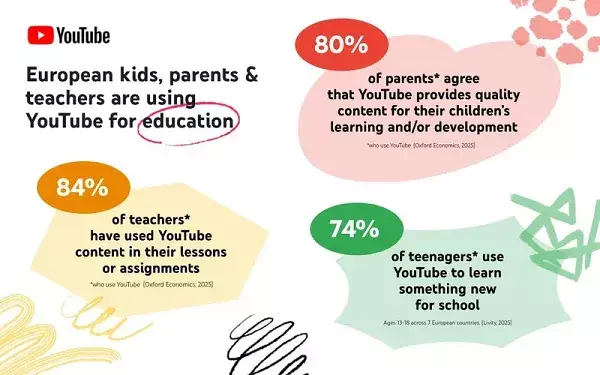YouTube has long been perceived primarily as a champion of entertainment, a digital playground where countless videos amuse, inspire, and occasionally distract. However, recent research reveals a profound shift in how young audiences view this platform—one that challenges its former identity. With over 7,000 teenagers across Europe sharing their insights, it’s evident that YouTube is increasingly becoming a vital educational tool. This transition not only elevates the platform’s importance in the learning ecosystem but also sparks a critical conversation about how digital giants can embrace this role responsibly.
The startling statistic that 74% of teens utilize YouTube to supplement their academic pursuits signals a seismic change. It underscores a new era where traditional classrooms are no longer the sole providers of knowledge. Instead, knowledge is democratized and made accessible through engaging videos that simplify complex concepts, showcase real-world applications, and foster curiosity. This powerful trend suggests that YouTube isn’t just a source of entertainment but a dynamic, interactive classroom that complements formal education and inspires independent learning.
Furthermore, the same study echoes a broader societal recognition: educators and parents are increasingly leaning on this platform to enhance the learning process. A vast majority of teachers integrate YouTube content into their lessons, acknowledging its potential to clarify topics and enrich understanding. Parents, too, see value in the platform’s educational offerings, often trusting it as a safe space to explore academic content. This growing reliance indicates that YouTube’s identity is shifting from a mere entertainment outlet to an indispensable educational resource.
Confronting Regulatory Challenges with Education in Mind
Despite its promising role in youth education, YouTube finds itself at a crossroads due to emerging age restrictions. Governments across Europe, Australia, and beyond are contemplating tighter regulations on social media access for minors. These measures, aimed at protecting vulnerable users, could inadvertently hinder the very educational opportunities that YouTube facilitates. In Australia, for instance, a proposed regulation is set to restrict users under 16 from accessing social media platforms altogether, threatening to stifle the platform’s educational potential for young learners.
YouTube’s response has been strategic but cautious. The platform argues that its educational benefits warrant exemption from restrictions, emphasizing the role it plays in aiding learning outside of traditional institutions. The platform points to reports from Oxford Economics, indicating that a significant percentage of teachers incorporate YouTube in their classrooms, and many parents trust its content for learning and entertainment alike. These arguments highlight the dual nature of YouTube’s value: entertainment that engages youth and educational content that nurtures their development.
Yet, such appeals are met with skepticism by regulators concerned about exposure to inappropriate or distracting content. The challenge lies in demonstrating that YouTube can balance its educational promise with safeguards protecting young users. If the platform can prove that its educational offerings outweigh potential risks, there’s hope for more nuanced regulations that recognize its positive impact rather than outright restrictions.
Charting a Path Forward: Balancing Innovation and Safety
To maintain its place as a premier learning resource, YouTube must evolve from reactionary debates into a proactive leader in responsible digital education. This involves implementing advanced safety features—such as customizable parental controls, AI-driven content moderation, and dedicated educational channels—that prioritize the well-being of its young users while preserving access to valuable learning materials.
More importantly, YouTube’s future hinges on building trust with regulators, educators, and parents. It needs to demonstrate its commitment to providing a controlled environment where curiosity can flourish without compromising safety. A comprehensive approach—combining technological safeguards, transparent content curation, and active partnerships with educational institutions—could forge a new identity: that of a digital classroom committed to safe, accessible, and effective learning.
In doing so, YouTube not only mitigates regulatory threats but also repositions itself as an indispensable ally in education. This shift can reshape public perception, transforming the narrative around social media platforms from cautionary tales to champions of knowledge. The platform’s potential to revolutionize how youths learn and explore is immense—if harnessed with responsibility and foresight. The challenge now is to turn that potential into lasting reality, ensuring that the educational power of YouTube is recognized and protected amid a rapidly evolving digital landscape.

